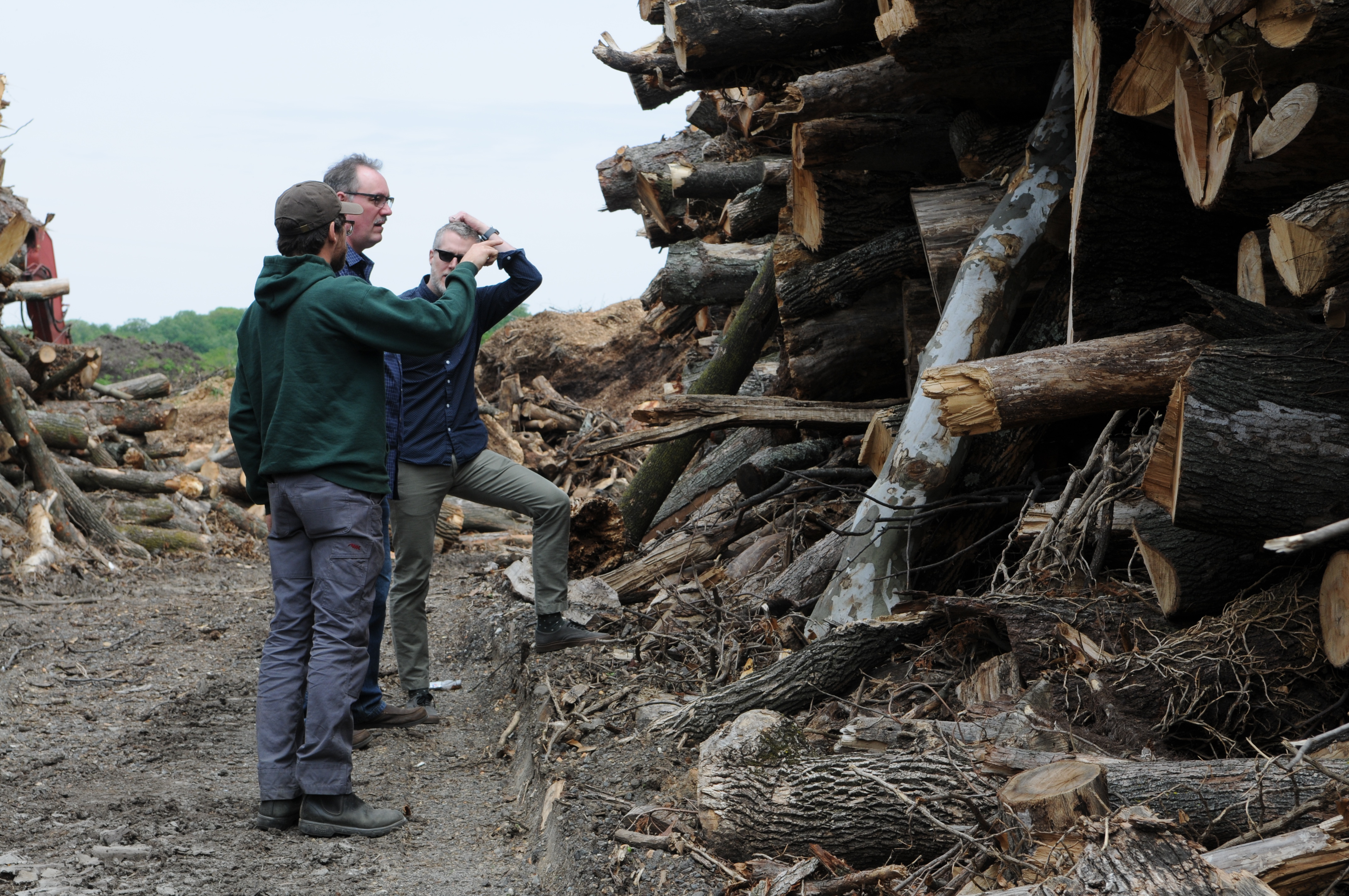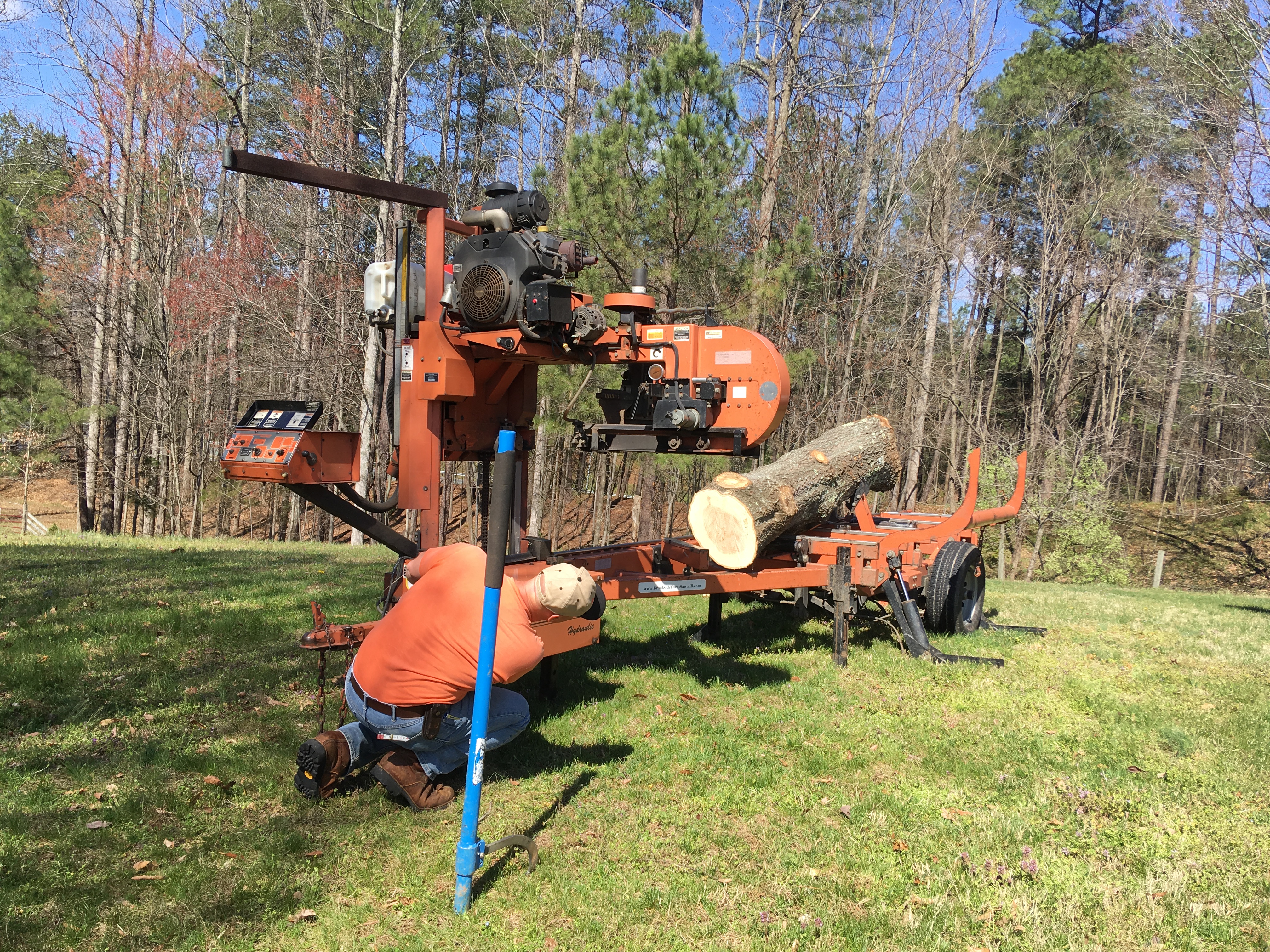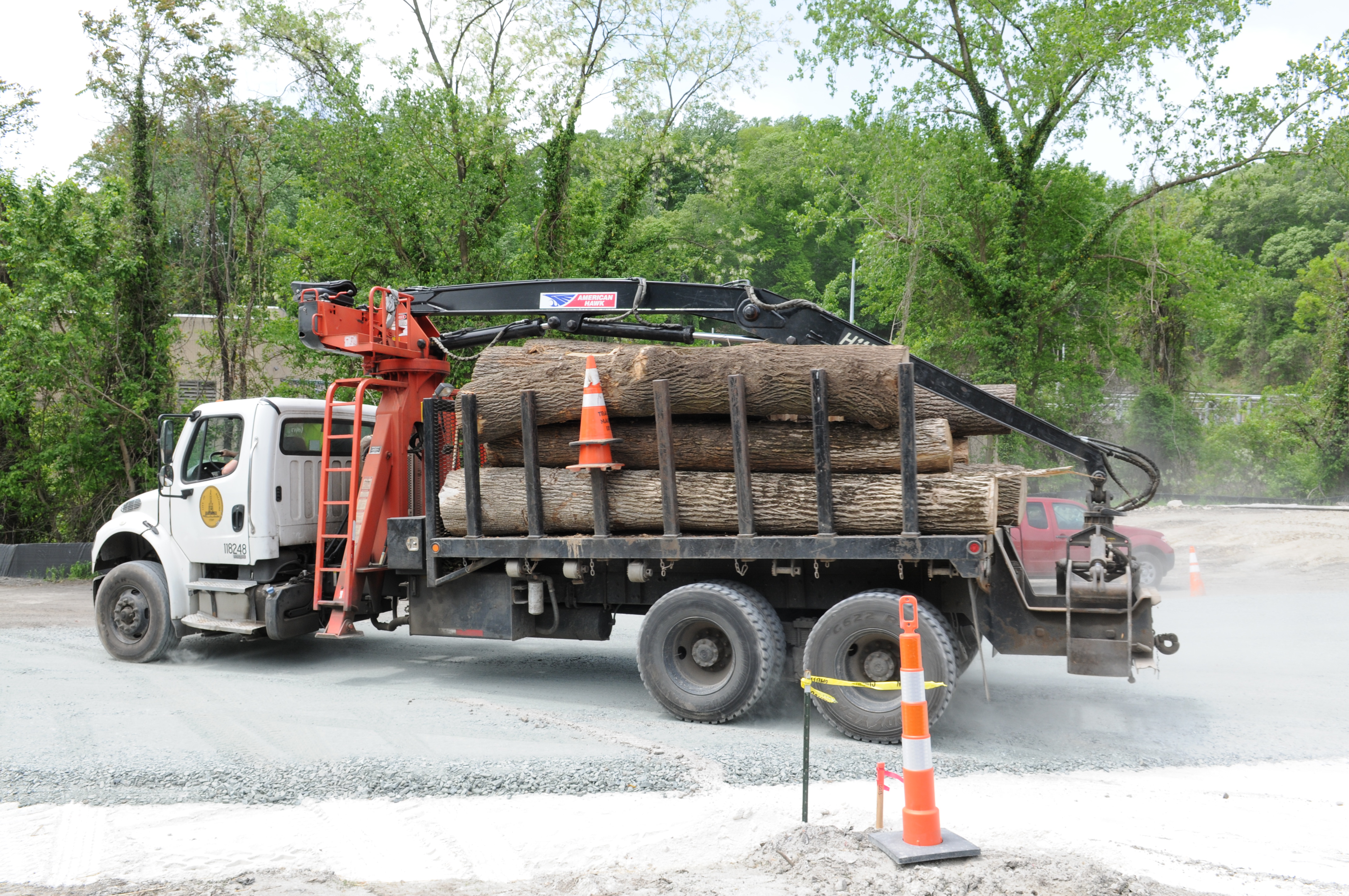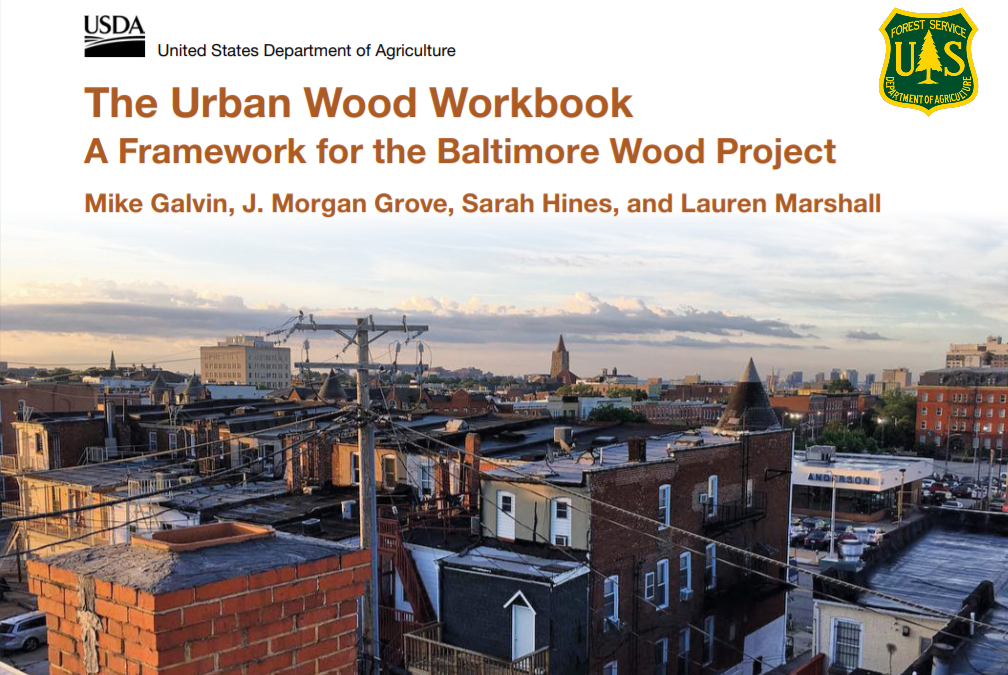In 2015, Camp Small was still the dumping ground for Baltimore’s waste wood. By that time, there were 16,500 cubic yards of decomposing detritus and mulch occupying three of the site’s then–seven acre total area. Each year, the city paid $60,000 to remove portions of the piles of logs and brush, while the mulch pile continued to grow and decompose. In 2016, Baltimore’s Office of Sustainability and the Department of Recreation and Parks joined to secure an Innovation Fund loan. The Camp Small Zero Waste Initiative had begun.
Camp Small Wood PileYardmaster Shaun Preston’s first achievement was to find a buyer to haul away the material that the City had hitherto paid to remove. Not only did he save the City $60,000, he cleared enough space to begin other revenue-generating activities.

Credit: Humanim
Although most of the logs dropped at Camp Small were decayed or damaged, roughly 10 percent could be processed as lumber. So a small sawmill like this one was added to the yard, turning out roughly 100,000 board feet of lumber for use in City projects or for sale to other users.

This lumber, milled from City trees, will be used in the interior design of the future Cahill Recreation Center | Photo: Doug Wolinski
Innovative Partnership
Camp Small is overseen by the City’s Department of Recreation and Parks which cooperates with other Baltimore non-profits and tree-concerned organizations. Prominent among them is Humanim — a social enterprise that places hard-to-employ people in living wage jobs.
For a workbook based on the Baltimore experience — which you can apply to your own community — please click here.
Funding
Original funding for the transformation of Camp Small — roughly $100,000 was provided by an Innovation Fund loan secured by Baltimore’s Office of Sustainability and Department of Recreation and Parks.
Implementation
Insights into the history of Baltimore, its housing stock and blight of abandoned homes, as well as the evolution of Camp Small can be found here.
Partners
To derive maximum benefit from Camp Small, the City faced multiple challenges — from workforce development to marketing and sales of processed materials. To address these issues, major partners pitched in:
- Humanim for employment and employee training
- Details and Brick + Board — both Humanim social enterprises — for deconstruction and recovery of materials, and their sale.
- SavATree’s Director of Consulting Mike Galvin
- USDA Forest Service
- American Forests
Lessons Learned
- Size matters, depending on type and extent of materials stored and primary processing facilities on-site
- Large trucks need to get in and out. This may involve a circular road if you only have one entry/exit point.
- The equipment and staff to pile, access, sort and process the types of material you want to have on site in the quantities needed. At a minimum, sorting equipment may include a forklift, backhoe, and log loader.
- Process may require additional equipment, for example a chipper, [portable] sawmills, firewood splitter, and biochar pyrolysis unit.
- If the sort yard will solicit and collect its own wood materials from the community, equipment may include one or more logging trucks of various sizes and capabilities.

